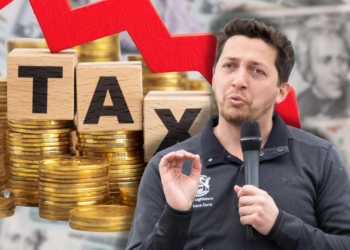With federal stimulus checks programs off the table after the April 15 deadline for pandemic-era claims, states continue deploying billions in relief checks and rebates this November. Drawn from tax surpluses, energy royalties and dedicated funds, these programs target inflation-weary residents through automatic deposits or mailed payments.
New York, Alaska, New Jersey and Pennsylvania lead the pack, alongside localized efforts in California, delivering aid without new applications for most qualifiers.
Stimulus checks: Several states sending money this month
New York’s pioneering inflation refund program channels over $3 billion back to more than eight million residents. Eligibility rests on filing a 2023 resident income tax return with adjusted gross income below specified caps—$75,000 for singles or heads of household, $150,000 for married filing jointly.
Single filers at or under the lower threshold receive $200, while those in the next bracket get $150; joint filers qualify for $400 or $300 accordingly.
Checks began mailing in late September, with waves continuing through November via direct deposit from 2023 returns or paper to listed addresses. The state warns of no online tracker—patience prevails amid high volume from 2022-2023 sales tax windfalls.
Alaska’s own PFD stimulus program
Alaska’s Permanent Fund Dividend stands as the nation’s longest-running resource-sharing model, disbursing $1,000 to roughly 650,000 eligible residents from oil and gas leases.
Full-year 2024 residency counts, with allowances for limited absences under 180 days provided return trips occur. Direct deposits hit October 2 for early applicants, paper checks followed October 23, and stragglers in “eligible-not-paid” status expect November 20 arrivals.
This year’s payout, confirmed September 19, being smaller than previews years, is part of the fiscal prudence after higher averages, yet injects vital cash into remote economies where costs run high.
ANCHOR stimulus program in NJ
New Jersey’s ANCHOR initiative ramps up property tax relief on a rolling basis, with payments underway since September 15 and applications open until October 31. Homeowners earning up to $250,000 snag $1,000 plus $250 for seniors 65-plus, pushing totals to $1,750; renters qualify for $450 base.
Automatic filings from prior years speed things for many, while confirmations arrived mid-August. Over 1.7 million households stand to benefit, easing burdens in one of America’s priciest housing markets through direct deposits or checks within 90 days.
Another stimulus program in Pennsylvania
Pennsylvania’s Property Tax/Rent Rebate program, extended through December 31, processes claims into late fall for seniors 65-plus, widows 50-plus and adults with disabilities.
Awards scale from $380 to $1,000 based on income up to $35,000 for homeowners or $15,000-ish for renters, covering 2023-2024 payments.
Direct deposits started July 1, checks mail weekly thereafter—late applicants still qualify if filed timely. This $500 million-plus effort, now in its 50th year, prioritizes direct deposit for speed, with myPATH portal updates guiding recipients.
California and Colorado to end sending checks soon
In California, Sacramento County’s Family First Economic Support Pilot sustains $725 monthly stipends through November and beyond for low-income families—200% of poverty line or below—with kids under 6 in targeted ZIP codes like 95815 and 95821. No fresh applications needed for ongoing participants; verification handles continuity. This $40 million local innovation tests universal basic income principles amid statewide rebate wrap-ups.
Colorado’s TABOR refunds, constitutionally required surplus returns, wrap for late 2024 tax filers through October extensions. Full-year residents claim via returns, expecting $20 to $62 singles or doubles for joints post-processing—modest amid projections. Payments follow e-file norms: three to five weeks.







